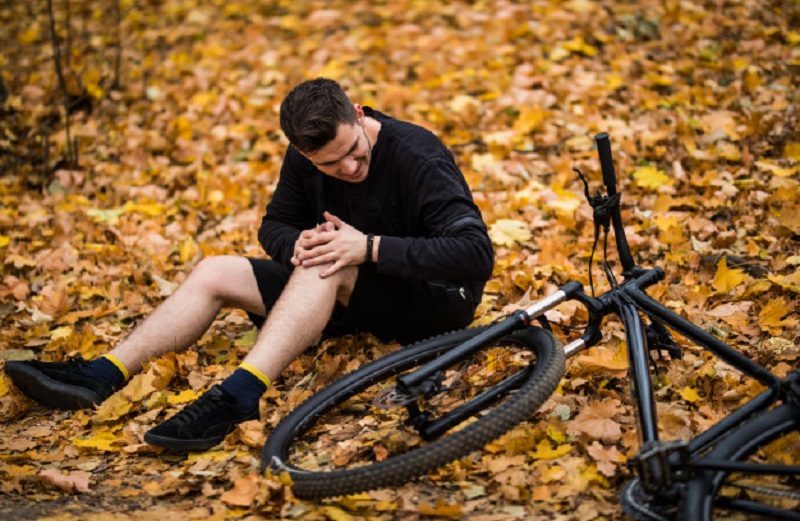There is a great message to tell about U.S. bicycling accidents, according to the People Powered Movement, a non-profit that holds tabs on statistics.
Their good news? “The overall estimate of bike accidents in the country is decreasing.”
These groups think that there are many causes for this trend. The Advocacy groups are growing better about “containing the bicycle culture,” more cities are adding bike lanes and architectural characteristics that add to this trend, and drivers are gradually starting to accept the reality that they must share the road.
But there is one more major factor contributing to this improving situation: Bicyclists are learning more about how can you prevent injury while cycling rather than just expecting to get fortunate every time they climb on their beloved ride.
Here are some of the ways you can meet this movement, so you do not become an injury statistic.
Table of Contents
Guide: How Can You Prevent Injury While Cycling
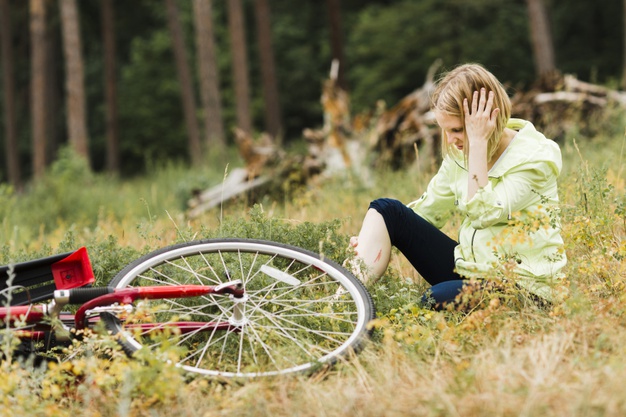
Today We at BestComfortBike are giving you some guide on How Can You Prevent Injury While Cycling.
How to Stop The Lower Back Pain
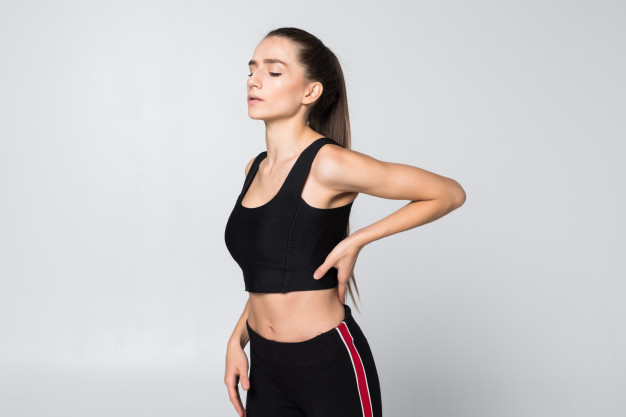
Are you sick and exhausted of feeling like your grandfather—walking around while complaining about your lower back pain? There may be no cure, but there is hope if you follow Dave Smith’s advice and use three procedures capable of mediating those severe aches.
These two easy-to-perform stretches would not work if you do not do them daily.
Before you go out of bed every morning, take your knees to your chest till you feel the stretch. Rock in and out of this form for 20 to 30 seconds.
Place your feet back on the bed with knees bowed and roll your knees as far to the left and right as you can, holding for 20 to 30 seconds.
Invest in a kettlebell to stretch your lower back every day. Stand with the feet shoulder-width and the toes pointed in the riding position, crouch with knees slightly bent, keep the kettlebell among your legs with both hands, and rotate it in and behind your legs.
Let your hips, not your arms, power the swings. Start with 25 sets, rest, and do add 25. Your goal is 75, three times a week, and your lower back pain should be lessened.
How to Stop The Numb Toes
The Michael Nystrom comprehends a thing or two about numb toes. As a two-time IRONMAN finisher and freelance writer, he uses his expertise to support cyclists deal with this disturbing circumstance that can arise with a tingle, morph into “pins and needles” and eventually leaving you with toes (or the entire foot) that are so irritating, you can not concentrate on your ride.
The reason?
You may be shocked to learn that many factors are effective for this numbness. They may be one or a mixture of:
- Nerve compression
- Impaired blood circulation
- A lousy arch support (too much or too little)
- Ill-fitting shoes
- Bad cleat placement.
Left neglected, you could turn up with nerve injury or chronic pain or both. Start your recovery by freeing your shoes as quickly as your toes get numb. If that does nothing but take you off your stride, think of renewing your shoes after discussing it with an orthopedic expert.
You can further try over-the-counter insoles and testing with your seat position. You may be riding too high or low. Either could lead to pinched nerves.
How to Stop The Hand Injuries
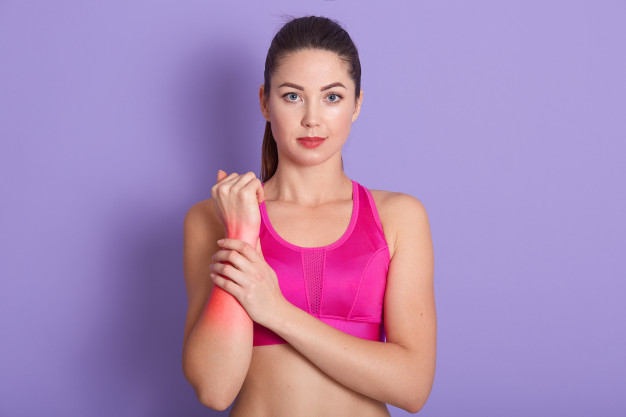
Drop it to the Aussies to cut through to the point without too much embellishment. This website maintained and approved by the Department of Health and Human Services, State Government of Victoria, Australia, gives this brief advice.
If your hand causes tingling or you feel numbness in your fingers or palms, you are entirely on your way to hand injuries if you do not come up with ideas to stop them in the first place. These four suggestions may help your pain, and they are worth a try before you see a therapeutic expert.
- How are you grasping your handlebars? Have you formed a grip that is extremely strong and tight, you could simply be the strangler in a Dr. Blake Mystery series program? Relax. Use a firm, relaxed grip rather.
- Are your hands in the identical positions they were when you left on your 10-mile ride? Not good. You lack to change their position frequently, then your hand muscles do not feel as though you have been lifting weights.
- Put your wrists straight. Start moving your hands around to pay for territory changes as you ride, or you chance straining your wrist muscles big time.
- If tracks and roads you patronize cause your bike to vibrate, employ handlebar tape, wear padded gloves or do both to offset and redirect that vibration and absorb shock.
- Quake it up. Take one hand off the handlebar and shake it as a germ has landed on your arm. Reform, with or without a bug.
How to Stop The Shoulder Pain
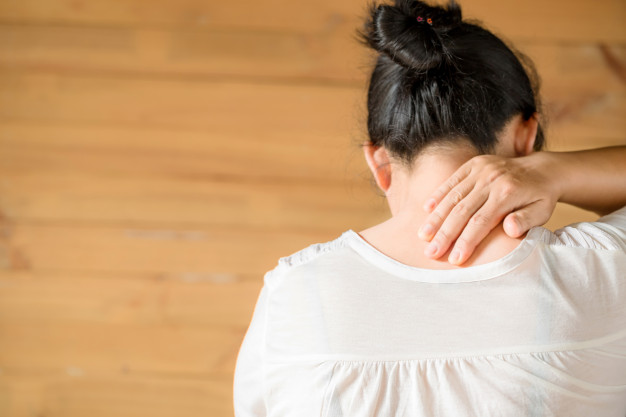
Are you feeling anxious all the time? You have fallen in love with cycling to lessen the stress that produces shoulder pain, but because you are not concentrating on managing your body arranged and rested, you are experiencing shoulder pain anyway.
You may not be shocked to hear that the tips connected with stopping lower back pain, fighting numbness, and blocking hand injuries will all assist you with your shoulder pain.
Add the following moves and see if you do not feel downright pleasant every time you ride.
- Ease your shoulders by shrugging every 15 minutes, whether you are feeling shoulder pain or not.
- Put your elbows turned to support stop the exhaustion that occurs as a consequence of muscle tension.
- Do not do your most excellent imitation of the Hunchback of Notre Dame. Tilt your head often to ease neck muscles, and your shoulders will feel the love.
- Estimate the width of your handlebars. You may be riding a bike fitted with handlebars that are too broad or narrow, therefore just trying to provide your body to this variety is sufficient to trigger shoulder pain.
- Master the art of neck and shoulder strengthening and stretching moves. “Develop a consistent routine of strengthening and stretching exercises to stay pain-free. Ask your trainer to add in some particular exercises or contemplate following a yoga class,” says Aussie veteran cyclist Nicola Rutzou.
How to Stop The Knee Injuries
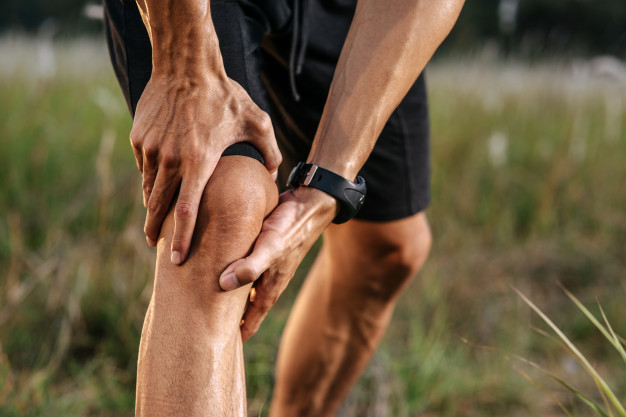
There are four causes cyclists develop knee pain and injuries, say the medical experts staffing four Heiden Orthopedic clinics in the state of Utah. How appear they are so smart? Dr. Heiden was an Olympic rival, therefore believe what he says.
Lest you believe that all four causes have to do with hurting body parts, you will be pleased to learn that saddle height and saddle positioning appear to be two of the four causes your knees get sore and hurt.
A young man using a cold compress to leg at home
If your seat is too high, you can receive pain along the back or outside of the knee. Increase that by reaching too far for your pedals, and you can knock your hamstring tendon out of whack and stress out your iliotibial band.
Increase your knee pain by riding on a saddle that is too low, and you could stress out your patellofemoral joint, leading to a painful kneecap. The state of your seat can attach insult to injury.
If your saddle is placed too far forward, you are asking for knee pain, and if you situate it too far back, you could simply overextend your knee.
Your saddle is not the single bike accessory plotting to injure your knees. Foot position on pedals can further do the job. If you are feeling pain in the middle of your knee, your feet may be too close or too far distant, either of which can affect joint stress.
Lastly, overexertion can trigger knee fractures. Take it from Dr. Heiden: if you do not desire to wind up on his surgical table, treat every secondary damage severely with rest, take pain meds if prescribed, and never turn down a chance to get physical treatment.
Your knees will praise you.
10 Common Cycling Safety Advices
One of the tried-and-true techniques for stopping cramps while cycling is a no-brainer: obey common protection tips.
Visiting the areas above of your body makes an excellent start, but if you throw all care to the wind and neglect usual cycling safety tips, it would not matter that you found a way to solve your lower back and shoulder pain.
We share ten handy tips posted by the city of Madison, Wisconsin—the state’s university hotbed and home to some of the most ambitious student bikers in the Midwest.
- Wear a helmet.Who worries what your hair looks like as a consequence of wearing this protecting gear? Feel free to pick a Best Commuter bike helmet that is both fashion-forward and greatly efficient about holding your brain protected and intact.
- Stay visible. Just a fool goes out at night dressed like a ninja. You desire to be seen. This is best achieved by wearing clothing with contemplative trim and turning on your bike lights when it is dark or nearly dark.
- Use hand signals, so drivers are informed of where and when you plan to turn. Drivers are simply confused, which is why cyclists must be doubly effective at nonverbal conversation, and making eye contact helps.
- Be alert. We do not have to say you that restrictions, people, and potholes can arrive with no warning in seconds. Your reflexes can get you out of trouble—but they will just do their job if you be alert.
- Go with the flow.Riding with traffic is the simplest way to travel. Time.
- Act like a car. We adore this idea. It is a warning that it is not nice to weave in and out of traffic like auto motorists who believe they are on track. Ride predictably; monitor traffic flows daily and up your possibilities of staying safe.
- Do not get distracted. Listening to music or chatting up a friend on your device may seem an excellent way to multitask, but peddling and scanning minus these distractions can support you live longer.
- Follow all traffic signals, laws, and patterns. Easy, right?
- Customize your bike before you ride. Understanding you are suffering amid traffic is not the best place to be, particularly if you have got a long ride forward to your goal.
- Inspect your brakes and wheels, too.If you have got quick-release wheels, you are particularly unsafe to having an accident.
Follow All of the Laws
Consider those ten security tips that are all you lack to know about staying injury-free? Not extremely fast, pedal pusher. These suggestions are fairly critical to your health and wellbeing.
- Perpetually yield to walkers and other vehicles when entering traffic. They were there first. Do not be a fool.
- We previously recommended riding in the identical direction as traffic flow, but it is worth mentioning a second time.
- Sidewalks are for folks who walk. In most maximum states, you break the law if you arbitrarily conclude that they are for bicycles, too.
- Just because you are on a bike, that does not mean traffic signals and signs do not implement to you.
- Perpetually accept the right of way before turning or moving to the left side of a lane to bypass a crash.
- Once, drivers had to use hand signals. Lights and blinkers now serve. Nothing has changed for cyclists, therefore put your hands to good use.
- Check State Specific helmet laws that apply to you.
Take Good Biking Gear
Having grown exhausted of being told that your primary concern when gearing up for a ride should continually be investing in a proper helmet, we would not replicate the warning.
However, there are other things to supplement your wardrobe that can benefit you evade injuries to other identically vital body parts.
- Invest in a reliable pair of cycling gloves to stop external hand injuries. Test the padding to see if it is thick enough to offset nerve concentration issues.
- Cycling shorts are more numerous than fashion statements. The right pair of cycling shorts can overcome saddle stress and provide you the padding you lack to guard the family jewels.
- Clothing with thoughtful trim or brightly-colored and patterned textiles will arrange you the best kind of care when lighting is iffy. Stand out in garments featuring “strobe lights” in the form to add a layer of security.
- The best shoes. Knowing that the correct fit is necessary, think adding toe clips or sole cleats to your gear. Both suggestions added stability and they are cheap.
- Having guarded your brain with a security helmet.
- Use high-quality sunglasses to shield your valuable eyes from the sun, bugs, and small road debris.

